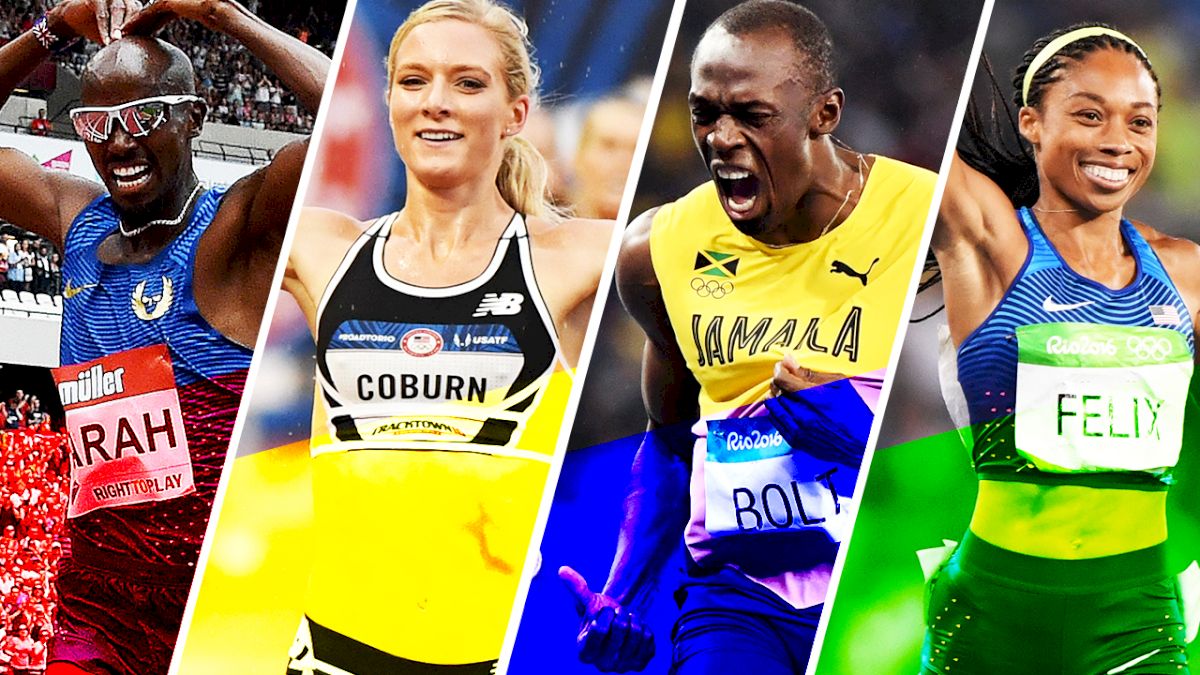What Track And Field Needs Most: Four Majors
What Track And Field Needs Most: Four Majors
Every year, people throw ideas around to enhance track and field: team scoring, alternative venues (in the street, in the mall, etc.), shorter meets, cool a

Every year, people throw ideas around to enhance track and field: team scoring, alternative venues (in the street, in the mall, etc.), shorter meets, cool athlete entrances, fans on the infield, beer at concessions, gambling, an athlete draft, trendy social media, cable broadcasting, FloTrack streaming… the list goes on and on.
All of these ideas are great. But they aren't solutions to the real problem.
The real problem with track and field is, besides the Olympics, there's only one week of global, high-stakes competition in three out of every four years: the outdoor world championships.
Let's fix that.
The current situation
Most years, Americans get to enjoy two weeks of dramatic track and field because the U.S. national championships/Olympic Trials are highly competitive, cutthroat qualifying events. But for the rest of the planet's athletes and non-diehard fans, the only meets that truly matter are the Olympic Games and world outdoor championships. And since the outdoor world championships have off-years, that only leaves three weeks of supremely consequential track and field every four years.
Here's a rundown of 2016's major elite meets and how the headliners approached them:
IAAF World Indoor Championships - Mo Farah and Usain Bolt didn't enter
Millrose Games - Bowerman TC used it as a rust-buster
HOKA One One Middle Distance Classic - Robby Andrews and Charlie Grice ran the 800m instead of their signature event
Tracktown Series - Matt Centrowitz did a workout
Prefontaine Classic - Allyson Felix, Centro and Galen Rupp all scratched
Events streamed LIVE by FloTrack - These always matter :)
Here are a few generalities:
International Diamond League Meetings - Mo and Bolt go for the appearance fees; in general, they couldn't care less about the DL standings
Non-team-selecting National Championships - Most of the top athletes scratch
Obviously, athletes truly care about these meets at times. But the only meet where everyone around the planet treats the meet like it matters is the world outdoor championships. It's the only meet with the heartbreak and ecstasy that come with real stakes; no other meet on Earth comes close. So let's not only do it once each year.
With only one major championship per year--and an off-year every four years--there's no build-up, no narrative, and no oxygen in the sport for 51 weeks each year. Let's have more major championships!
Four championships work for individual sports like golf and tennis, and it can work for track and field, too. To everyone besides us, track and field may or may not be the objectively coolest sport, but it's at least as cool as golf and tennis. Those sports just have more money and attention because they have more championships that their stars care about.
So, what would four majors for track and field look like?
Each major would...
- Be four days long (Thursday-Sunday)
- Start the city's marathon on Sunday morning before the final day of action
- Allow 24 athletes to qualify per event using two rounds from 100m-3K steeplechase, and one round for 5K/10K (modern NCAA championship-style)
Here's what the schedule could look like:
2/23-2/26 Tokyo Throwdown
Host: Tokyo, Japan
4/20-4/23 British Open
Host: London, UK
5/25-7/16 National Championships Window
An eight-week window to host your country's national championship meet
8/10-8/13 IAAF Championships
Host: City changes every year, and this event is replaced with the Olympics every four years.
9/21-9/24 Berlin Grand Prix
Host: Berlin, Germany
How the 24 qualified athletes would be determined:
a) Athletes must hit a standard in an event within one year of the event
b) Defending champions receive automatic qualifiers, provided they have the standard
c) Champions from the previous three majors receive automatic qualifiers, provided they have the standard
d) Each major will have two qualifier meets; if you win the qualifier meet, you get an automatic entry, provided you have the standard
e) Remaining athletes are accepted based on descending-order lists within one year of the event
Or, we could mix it up!
Different meets could have different qualifying methods. Some of them could keep a limit of three athletes per country; some could remove the cap. Imagine the glory of a true world championship with eight American 100m sprinters and 15 Kenyan milers!
What would happen to the current major elite meets?
IAAF World Indoor Championships - ELIMINATE, indoor track is not a global sport
Diamond League Meetings - KEEP, use them as majors qualifiers
National Championships - KEEP, use them to get a top-24 mark and to qualify for the Olympics
IAAF World Challenges - KEEP, use them as meets to get a top-24 mark
IAAF World Indoor Tour - ELIMINATE, indoor track is not a global sport
NCAA Meets - KEEP, use them as meets to get a top-24 mark and for NCAA Championships
U.S. Pro Meets - KEEP, use them as meets to get a top-24 mark.
IAAF World U20 Championships - KEEP, use them to prepare athletes for the majors
IAAF Continental Cup - ELIMINATE
IAAF World XC Championships - KEEP, it's a different sport
IAAF World Race Walking Team Championships - ELIMINATE, not a big enough audience to sustain
IAAF World Half Marathon Championships - ELIMINATE, run the marathon or the majors' 10K
IAAF World Relays - KEEP
IAAF Road Label Races - KEEP, use them to get a top-24 marathon mark
IAAF Combined Events Challenge - KEEP, use them to get a top-24 multi-event mark
IAAF Race Walking Challenge - ELIMINATE, not a big enough audience to sustain
IAAF Hammer Throw Challenge - ELIMINATE, repetitive
IAAF XC Permit - KEEP, it's a different sport
Let's start the conversation. Our sport deserves more.